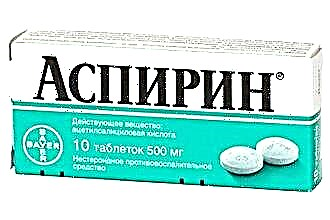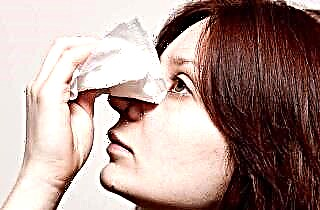A red throat is a key sign of redness of the oropharyngeal mucosa. As a rule, it is not accompanied by other symptoms. In most cases, redness of the throat indicates the presence of an acute inflammatory process of bacterial or viral origin. Often the throat is red in chronic infections. In medical practice, this phenomenon is called pharyngitis, which affects the back of the pharynx.
How to treat a red throat, and should you take antibiotics? To answer these questions, let's take a closer look at the causes and mechanism of development of mucosal hyperemia.
Factors contributing to the onset of the inflammatory process
It should be noted right away that redness of the throat may not be accompanied by discomfort. But this does not mean that the disease should be allowed to take its course. It is extremely important to consult a doctor in a timely manner, who will establish an accurate diagnosis and select the optimal treatment strategy. To answer the question: "Why do I have a red throat?", You need to analyze the following possible causes of redness:
 Viral infection. Experience shows that in most cases, throat congestion is caused by viruses - adenoviruses, coronaviruses, influenza viruses, parainfluenza, and so on. If therapy is not started on time, then bacterial agents will join the viral agents.
Viral infection. Experience shows that in most cases, throat congestion is caused by viruses - adenoviruses, coronaviruses, influenza viruses, parainfluenza, and so on. If therapy is not started on time, then bacterial agents will join the viral agents.- Pathogenic bacterial microflora. The inflammatory process is most often caused by pneumococci, streptococci, haemophilus influenzae and some other groups of pathogenic bacteria. In the absence of adequate treatment, a bacterial focus forms very quickly. Due to the active reproduction of microbes, intoxication of the body occurs with concomitant symptoms (fever, chills, general weakness).
- Mushrooms. As a rule, fungi from the genus Candida have a negative effect on the larynx. Such pathogens actively multiply in a weakened organism with low immunity.
How does the inflammatory process occur? Viruses and bacterial agents enter the mucous membrane and begin to actively develop, thus forming a focus of pathogenic microflora. For this reason, redness occurs, which is often accompanied by a sore throat (but may not be). Often, flushing is complemented by severe coughing attacks.
Usually, inflammation focuses on the lateral as well as the posterior pharyngeal wall. The response of the body is the secretion of sputum by the mucous membrane and its subsequent expectoration with the help of a cough.
Why is it important to treat a sore throat early? Lack of therapy often leads to the transformation of an acute inflammatory process into a sluggish and protracted form. In other words, the disease becomes chronic.
Chronic inflammation of the hypertrophic type of throat, in addition to the mucous membrane, also affects the adjacent tissues. Therefore, the patient's voice may appear hoarse. Moreover, partial or complete loss of voice is possible. The main symptom of an atrophic inflammatory process is desiccation of the mucous membrane. In this case, the mucus dries up, forming a white coating and crusts.
Drug therapy
If you are unsure of how to treat a sore throat, talk to your doctor. He will make an accurate diagnosis. Therapy is carried out in the following directions:
 When it is established that hyperemia is a symptom of bacterial sore throat, pay attention to antibiotics. Among the most effective broad-spectrum antibacterial drugs, the following should be highlighted: "Doxycycline", "Azithromycin", "Ampicillin", "Erythromycin" and some others.
When it is established that hyperemia is a symptom of bacterial sore throat, pay attention to antibiotics. Among the most effective broad-spectrum antibacterial drugs, the following should be highlighted: "Doxycycline", "Azithromycin", "Ampicillin", "Erythromycin" and some others.- In parallel with taking antibiotics, it is necessary to use means to protect the intestinal microflora. Antibiotic therapy does not pass without leaving a trace for the body; it can disrupt the stable functioning of the gastrointestinal tract. Therefore, the attending physician prescribes hepatoprotectors ("Bifiform", "Hilak Forte", "Linex" and others).
- If a patient has a red throat, not everyone knows how to treat him. Especially when viruses are the cause of the inflammation. In this case, antibiotics are not needed. It is recommended to pay attention to drugs that increase immunity and promote the active production of interferon (natural protein structures that fight viruses). Most often appoint "Viferon", "Otsillococcinum", "Cycloferon" and some others.
- Do not forget about the local impact. The throat must be periodically treated with various antiseptic solutions (for example, "Lugol", "Furacilin", "Tantum-Verde" and so on).
- Quite often, drugs from the group of fluoroquinolones are introduced into the therapeutic course. They cope well with pathogenic microflora and by the nature of their activity are similar to broad-spectrum antibiotics. To cure a red throat, use a drug such as Tsiprolet.
Remedies from the arsenal of traditional medicine
The reddened upper layer of the mucous membrane can also be treated with the help of folk recipes - decoctions, compresses and rinses. But before that, you need to consult a doctor and find out if such therapy will harm the body. This advice will be especially useful for people who are allergic to certain irritants.
Pay attention to fir oil - a healing natural product that helps to quickly cope with throat congestion. It must be carefully applied to the inflamed area (two drops are enough) every 6 hours for three to four days.
Regular gargles fight inflammation well. For this we recommend using:
 a solution of ordinary baking soda with iodine;
a solution of ordinary baking soda with iodine;- liquid "Furacilin";
- extract of eucalyptus and sage;
- decoction of chamomile and calendula;
- infusion of honeysuckle and licorice root.
To soothe a sore throat and significantly reduce the intensity of the inflammatory process, do not forget about the traditional hot drink in the form of tea with lemon and honey (or raspberry jam). Warm milk with the addition of honey and butter has a positive effect on the condition of the mucous membrane. It should be drunk daily, preferably before bedtime.
As for alcohol compresses and mustard plasters, they also treat red throat well. But they cannot be used if the inflammatory process is accompanied by an increase in body temperature. In this case, they should be abandoned, otherwise the clinical picture can be further aggravated.
Preventive actions
As already mentioned above, mainly the inflammatory process in the throat begins with the active influence of bacterial and viral agents. But do not discount the hypothermia factor. Often it is he who causes the red throat. Therefore, we recommend that you always dress for the weather.
The autumn-winter period is a time when severe flu and cold epidemics are raging. In order not to get infected, try to avoid crowded places and, if possible, wear a cotton-gauze mask.
In addition, we advise:
 introduce foods rich in vitamins into the diet;
introduce foods rich in vitamins into the diet;- start to temper the body;
- insulate the chest and neck;
- do breathing exercises regularly.
It is highly desirable to temper, since bacterial inflammatory processes actively affect people with weak immunity. Daily contrast showers and other methods of hardening will help not only insure yourself against colds and acute respiratory infections. Few people know that they are able to cure chronic tonsillitis and other sluggish infectious ailments.In this case, the main thing is to adhere to the principle of regularity.
Lead a healthy lifestyle, go to the gym, eat natural foods, and you will notice that you start to get sick less often.

 Viral infection. Experience shows that in most cases, throat congestion is caused by viruses - adenoviruses, coronaviruses, influenza viruses, parainfluenza, and so on. If therapy is not started on time, then bacterial agents will join the viral agents.
Viral infection. Experience shows that in most cases, throat congestion is caused by viruses - adenoviruses, coronaviruses, influenza viruses, parainfluenza, and so on. If therapy is not started on time, then bacterial agents will join the viral agents. When it is established that hyperemia is a symptom of bacterial sore throat, pay attention to antibiotics. Among the most effective broad-spectrum antibacterial drugs, the following should be highlighted: "Doxycycline", "Azithromycin", "Ampicillin", "Erythromycin" and some others.
When it is established that hyperemia is a symptom of bacterial sore throat, pay attention to antibiotics. Among the most effective broad-spectrum antibacterial drugs, the following should be highlighted: "Doxycycline", "Azithromycin", "Ampicillin", "Erythromycin" and some others. a solution of ordinary baking soda with iodine;
a solution of ordinary baking soda with iodine; introduce foods rich in vitamins into the diet;
introduce foods rich in vitamins into the diet;

